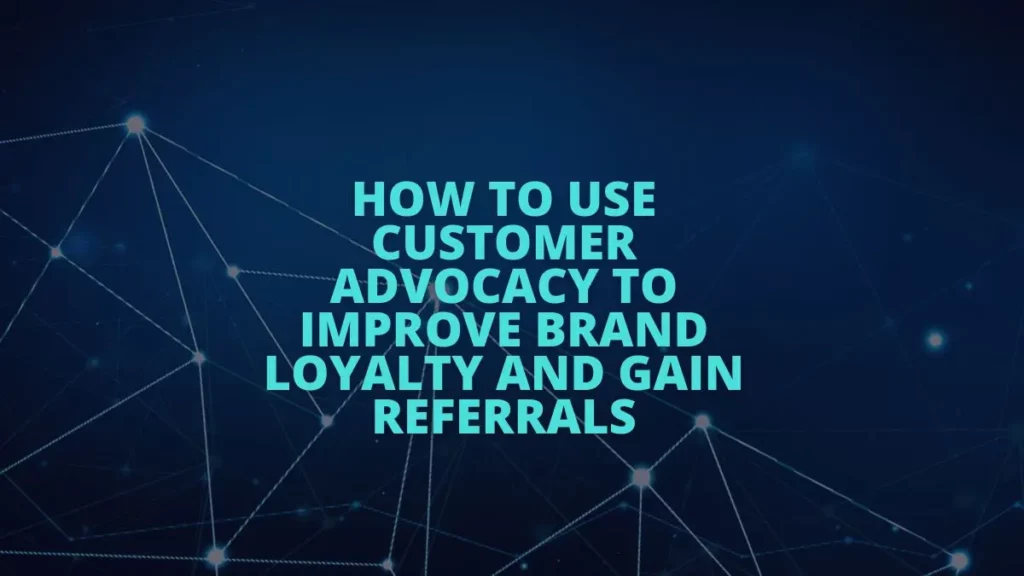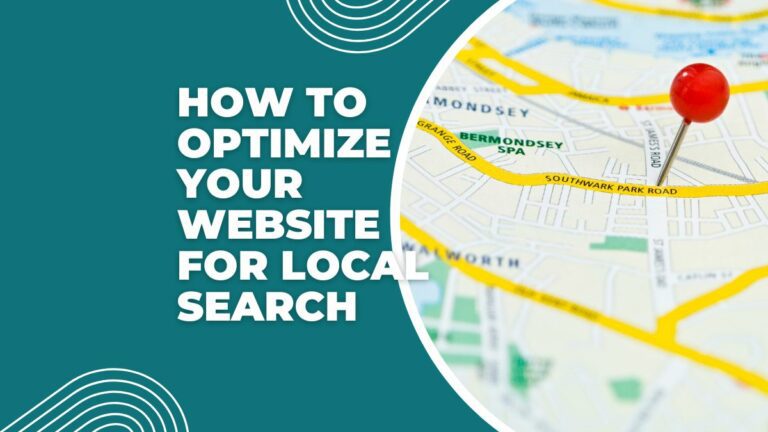
How to Use Customer Advocacy to Improve Brand Loyalty and Gain Referrals
In today’s fiercely competitive business landscape, customer advocacy has become a powerful tool for companies looking to strengthen their brand loyalty and drive organic growth through referrals. Advocacy goes beyond traditional marketing efforts by leveraging the influence of satisfied customers who become brand ambassadors and vocal supporters. This article will explore the ins and outs of customer advocacy, its benefits, and how to implement effective strategies that will elevate your brand to new heights.
Understanding Customer Advocacy
Customer advocacy is more than just satisfied customers; it’s about transforming them into active promoters of your brand. These advocates genuinely believe in your products or services and willingly share their positive experiences with others. Unlike traditional marketing methods, customer advocacy relies on authentic word-of-mouth recommendations, significantly influencing consumer buying decisions. You can tap into its tremendous potential by understanding the essence of customer advocacy.
The Benefits of Customer Advocacy
Harnessing customer advocacy brings a multitude of benefits to your business:
- It strengthens brand loyalty by creating a community of passionate advocates who actively engage with your brand, defends it against criticism, and provide valuable feedback
- Customer advocates become a source of referrals, driving organic growth and expanding your customer base
- Advocacy increases customer lifetime value, as loyal customers tend to make repeat purchases and have a higher average order value
Building a Foundation for Customer Advocacy
To cultivate customer advocacy, you must lay a solid foundation by delivering exceptional customer experiences. Start by providing top-notch products or services, ensuring seamless interactions at every touchpoint, and resolving issues promptly. Additionally, fostering a customer-centric company culture is vital. Align your entire organization around customer satisfaction and empower employees to go the extra mile. Finally, identify and nurture your existing brand advocates, recognizing their loyalty and allowing them to voice their opinions.
Engaging and Empowering Advocates
Engaging your advocates is crucial for sustaining their support. Establish two-way communication channels to encourage open dialogue. Actively listen to their feedback, respond promptly, and implement changes based on their suggestions. Encourage user-generated content and testimonials by providing platforms where advocates can share their stories and experiences. Furthermore, incentivize and reward customer advocacy through exclusive discounts, referral programs, or access to beta testing.

Leveraging Social Media for Customer Advocacy
Social media platforms offer a powerful avenue for customer advocacy. Identify the platforms where your target audience is most active and engage with them there. Create compelling content that sparks conversations and encourages sharing. Actively respond to positive and negative comments to demonstrate your commitment to customer satisfaction. Consider partnering with influencers who align with your brand values, as their endorsement can amplify your advocacy efforts.
Implementing Customer Advocacy Programs
To systemize your advocacy efforts, develop and implement customer advocacy programs. Design these programs to align with your business goals and core values:
- Clearly define the objectives you aim to achieve through advocacy, such as increasing customer referrals or improving brand sentiment.
- Establish metrics to measure success, such as the number of referrals generated or increased positive emotion.
- Continuously monitor and evaluate the impact of your advocacy programs to make data-driven adjustments.
Overcoming Challenges in Customer Advocacy
To effectively navigate the challenges that may arise in customer advocacy, it’s essential to be prepared and proactive. Here are some common hurdles and strategies for overcoming them:
- Addressing potential obstacles and pitfalls: Not all customers may be willing to advocate for your brand, and some may even have negative experiences. Stay responsive and proactive in addressing customer concerns and resolving issues promptly. Demonstrating a commitment to customer satisfaction can minimize potential obstacles and build trust with your audience
- Harness the power of customer advocacy to strengthen brand loyalty and gain referrals. Discover effective strategies, benefits, and case studies in this comprehensive guide for business growth.: Negative feedback is inevitable, but how you respond can significantly impact it. Embrace criticism as an opportunity for improvement, respond empathetically, and take swift action to address any issues. Proactively manage crises by communicating transparently, providing timely updates, and demonstrating your commitment to resolving the situation
- Adapting advocacy strategies to changing customer preferences: Customer preferences and behaviors evolve. Stay attuned to these changes and adjust your advocacy strategies accordingly. Regularly collect feedback, conduct surveys, and monitor market trends to ensure your advocacy efforts align with your target audience’s expectations
Scaling Advocacy Efforts
Once you have established a strong foundation for customer advocacy, it’s essential to scale your efforts to maximize their impact. Consider the following strategies:
- Expanding advocacy programs across different customer segments: Tailor your advocacy initiatives to specific customer segments to ensure relevance and resonance. Understand each piece’s unique needs and preferences and customize your messaging and incentives accordingly
- Leveraging technology for efficient advocacy management: Leverage customer relationship management (CRM) software and advocacy management platforms to streamline your advocacy efforts. These tools can help you track and manage advocate activities, automate communication, and gather valuable data for analysis and optimization
- Creating a scalable infrastructure for sustained growth: As your advocacy programs grow, ensure that your infrastructure can support the increased volume of engagement. Invest in robust systems, processes, and resources to effectively manage and nurture your advocate community
Measuring the Success of Customer Advocacy
To gauge the effectiveness of your customer advocacy initiatives, it’s crucial to establish key metrics and track relevant data. Consider the following measurement strategies:
- Key metrics and analytics for evaluating advocacy efforts: Identify key performance indicators (KPIs) that align with your advocacy goals. These may include the number of advocates acquired, referral conversion rates, social media engagement metrics, or customer sentiment analysis. Regularly monitor these metrics to assess the impact of your advocacy initiatives
- Tracking customer sentiment and brand perception: Monitor online mentions, social media sentiment, and customer reviews to gauge the overall sentiment towards your brand. Analyze customer feedback to identify areas of improvement and address any negative ideas proactively
- Calculating the ROI of customer advocacy initiatives: Measure your advocacy efforts’ return on investment (ROI) by assessing the financial impact of increased customer referrals, customer lifetime value, and cost savings from reduced marketing expenses. By understanding the monetary value generated through advocacy, you can make informed decisions regarding resource allocation and program optimization
Integrating Advocacy with Customer Relationship Management
Customer advocacy and customer relationship management (CRM) strategies go hand in hand. Integrate your advocacy initiatives with your CRM efforts to maximize their impact:
- Combining customer advocacy with CRM strategies: Seamlessly integrate advocacy activities into your existing CRM systems. Capture advocate data, track their interactions with your brand, and align advocacy efforts with customer profiles and segmentation. This integration allows personalized and targeted communications with your advocates, fostering more profound relationships.
- Leveraging advocacy data for personalized customer interactions: Utilize the data gathered from advocacy initiatives to enhance the personalization of your customer interactions. Tailor your messaging, offers, and recommendations based on advocacy data and insights. By understanding the preferences and behaviors of your advocates, you can create more meaningful and tailored experiences for them.
- Enhancing customer journeys through advocacy integration: Integrate advocacy touchpoints throughout the customer journey. Identify opportunities where advocates can provide testimonials, reviews, or referrals to potential customers. By seamlessly integrating advocacy into the customer journey, you can amplify its impact and drive engagement at critical moments.

Collaborating with Brand Advocates: Co-creation and Feedback
To foster deeper engagement and loyalty, involve your advocates in the co-creation process and actively seek their feedback:
- Involving advocates in product development and innovation: Engage your advocates in the early stages of product development or service enhancements. Seek their input, involve them in beta testing, and listen to their suggestions. By involving them in the process, you strengthen their commitment to your brand, gain valuable insights, and create products that better meet their needs
- Gathering and implementing customer feedback for continuous improvement: Actively seek feedback from your advocates through surveys, focus groups, or dedicated feedback channels. Analyze their input, identify patterns, and implement changes based on their suggestions. Demonstrating that their voices are heard, and opinions matter fosters a sense of ownership and deepens their advocacy
- Cultivating a sense of right and loyalty through collaboration: Collaborate with your advocates on initiatives that align with your brand values. This could include co-hosting events, featuring their stories on your website or social media platforms, or inviting them to contribute guest content. You reinforce their loyalty and encourage continued advocacy by showcasing their involvement and giving them a platform
Best Practices for Sustaining and Evolving Customer Advocacy
To ensure the long-term success of your customer advocacy efforts, consider the following best practices:
- Continuously engaging and nurturing brand advocates: Advocacy is an ongoing process that requires consistent engagement. Regularly communicate with your advocates, provide them exclusive content, and involve them in exclusive opportunities. Recognize their efforts and show appreciation for their support. By nurturing these relationships, you can sustain their advocacy over time
- Staying updated with emerging advocacy trends and technologies: The field of customer advocacy is constantly evolving. Stay informed about emerging trends, tools, and technologies that can enhance your advocacy efforts. Monitor social media platforms, influencer marketing trends, and customer engagement strategies. Embrace innovation and adapt your strategy accordingly to stay ahead of the curve
- Evolving advocacy strategies to align with changing customer expectations: Customer expectations and preferences evolve. Stay attuned to these changes and adjust your advocacy strategies accordingly. Regularly gather feedback from your advocates and monitor customer sentiment to identify areas of improvement. By adapting your approach to meet changing needs, you can maintain the relevance and effectiveness of your advocacy efforts

Closing Notes
Customer advocacy has emerged as a powerful tool for businesses looking to boost brand loyalty and gain referrals. By cultivating a community of passionate brand advocates, engaging them effectively, leveraging social media, implementing structured advocacy programs, and measuring success, you can harness the power of customer advocacy to drive organic growth and strengthen your brand.
Integrating advocacy with CRM strategies, collaborating with advocates, and staying updated with best practices ensure sustained success. Embrace the power of customer advocacy and unleash its potential to propel your brand to new heights.
Digital Results would be happy to help you with your digital marketing needs. Get in touch for a free 30-minute consultation—one of our experts will walk through how we can help optimize your search engine optimization (SEO).
Ready to Grow Your Search Engine Results?
Let Digital Results assist you in your SEO strategy and help
deliver the search engine results you need.






